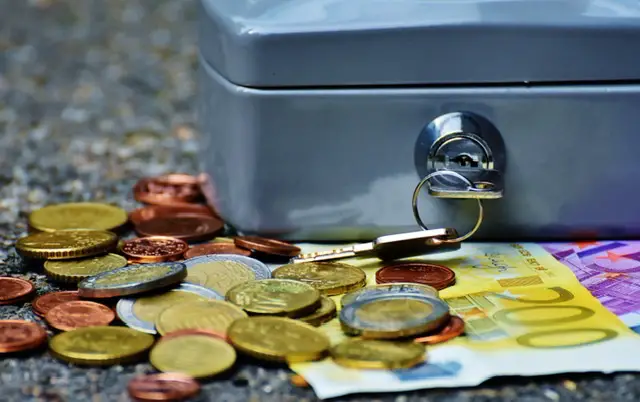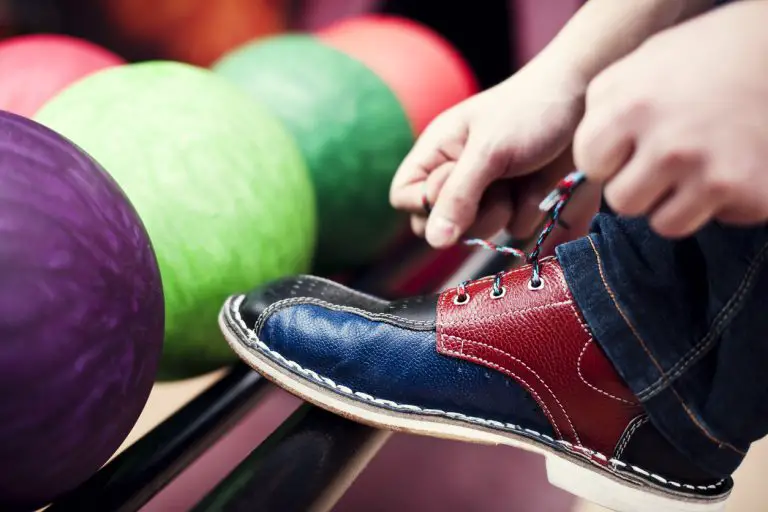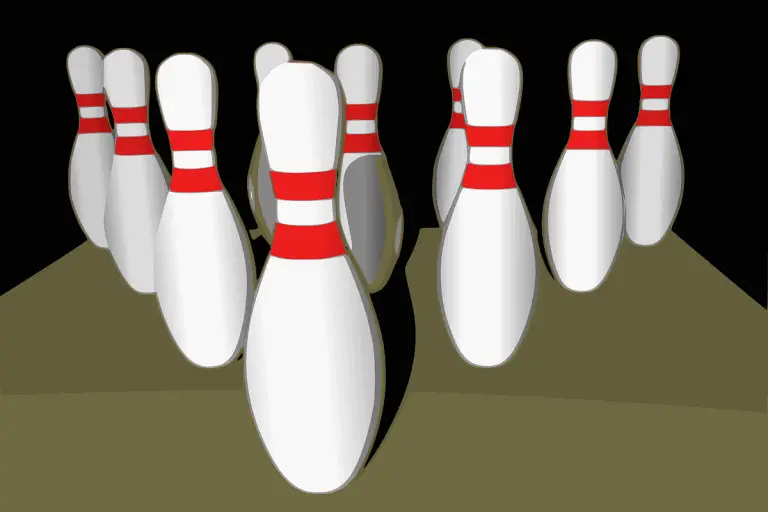Can You Use Sandpaper On A Bowling Ball?
Meta Description: Bowling balls are not just made dull or shiny. Did you know that the surface texture of your bowling ball can affect your game? Stick around to learn more.
You were probably used to seeing dull and shiny bowling balls since you were a kid going down the bowling lane. Dull balls were for oily lanes and shiny balls were for dry lanes. The roughness of the bowling ball’s surface is an important factor in the reaction of the ball on the lane. The rate of transition can determine the bowler’s success.
In short, you can use sandpaper on a bowling ball if you want it to hook more and for use on oily lanes. Sanded balls use up energy faster and have a smoother hook than polished balls. It is good to know what type of bowling ball you have before sanding.
Bowlers who want to refine their game should pay attention to the importance of surface management. Maybe your bowling ball is not reacting the way it used to or is not serving the way you want it. If this is the case, it’s time to resurface your ball.
What Are Sandpapers?
Sandpapers or ‘coated abrasives’ consist of a single layer of abrasive particles stuck together to a flexible, backing material. The level of cutting action of coated abrasive products depends on the abrasive material used.
An abrasive material is sharp and hard and is used to wear off the surface of softer, less resistant fabrics. Natural and synthetic substances can both be abrasive. They vary from the rather soft particles used in home cleaning products and jewelry polishing.
Should You Sand A Bowling Ball?
You can sand any bowling ball, but the results will vary depending on the ball type. Sanding performs best on reactive and urethane bowling balls. You should first know what type of bowling ball you have. If you don’t know, check the manufacturer’s website and look at the coverstock. Anything other than polyester will be good to sand.
In general, from a lateral hook point of view, polished or shiny balls skid faster and work better in drier conditions, yet it is not necessarily true when looking at ball motion from front to back. Various types of surfaces play different roles in the course of the bowling ball.
Depending on the bowling ball’s surface, the lane conditions, and the bowler’s style, you’ll know how much the ball will hook laterally. Since sanded balls lose energy quickly, they hook less than shiny ones.
Sandpaper pads are made with various forms of grits for bowlers to take control over the bowling ball’s surface roughness they want to use. A lot of manufacturers today offer details on the finishing process they used on their surfaces. You may want to be aware that you CAN change the surface roughness that came out of the box.
Bowling balls available in the market are fabricated with a standard surface setup. Depending on your game style, these standard surfaces may not be the best fit for you. Your game tactics, ball outline, and conditions may need a change of surface.
The environment of the game determines a ball’s reaction. You should tweak the ball’s surface when necessary. Different environments call for different surfaces. You can use Abralon pads and other abrasives to graduate the ball’s response and align it with your needs.
A full set of sandpaper pads is ideal to give yourself the most adjustability. Abrasives that have lower numbers point to coarser surfaces while higher numbers point to smoother surfaces. For example, 2000 and 3000 grit pads are smoother than 400 and 700 grit pads.
Surface Management
Besides having great cleaning habits, occasional resurfacing is very important to maintain your bowling ball in its best shape. In time, the usage of your ball will cause the microscopic pores of the ball’s surface to smooth out, in turn decreasing the friction or ‘hook’ between the ball and the lane.
Spending time during practice to experiment with different surfaces is the best way to understand the outcomes the textures will have in the gaming environment.
Surface changes are reversible, so you can change back and forth through the different pads without a problem. It is unheard of that you can ruin a bowling ball for good using different surface changes. Whatever you want to try, you can change it back to its original state.
One thing to keep in mind is that if you decide to use an extremely rough pad,i.e., under 500, it will be harder to remove those deep grit lines. The rougher the surface, the harder it will be to undo it, but it is still possible.
Experimenting is the best way to learn how to manage surfaces and to adapt them to your particular needs.
Let’s say you start with a ball with a 1000 grit sanded surface with polish on top and decide to sand or ‘dull’ it to 800; you can easily sand it again with a 1000 grit pad and just add polish.
Is It Legal?
Before investing your time in sanding your bowling ball for a game, it is important to know the competition rules. Are you allowed to change the ball’s surface?
The truth is, it will depend on the type of competition. Some important points to consider are as follows:
- In the USBC (American) and the CTF (Canadian) competitions, the use of abrasives on the surface of a bowling ball while bowling is not allowed. They have the right to remove any bowling ball that is modified from the competition.
- The rest of the current game and remaining games in the bowling rounds determine the competition.
In general, this means that league play and tournaments have no specific rule about the surface adaptations made by players. You can only change the surface before starting to play; in other words, before tossing the first ball in the competition. During practice, it is also normally allowed to change the bowling ball’s surface.
Every competition can have its own rules. You can check the USBC (American) and the CTF (Canadian) Rule 18 for more details.
- Tournaments that have bowling ball restraints allow to make surface changes manually between one game and another, as long as they are made in the corresponding area and the process doesn’t hold back the next bowler’s turn.
In the international competition rule, they permit surface changes during the block, but only between games – just like this last rule. Even if a small detail, it’s important because many times, bowlers touch their ball surface between games in international play, but it is not legal in many local, state, or national tournaments, such as the USBC Open Championships.
The USBC Open Championships are the most rigorous in rules on surface managing. Another rule goes as follows:
- There are no bowling balls alterations allowed once you exit the squad room.
This means that you cannot even change the ball surface during practice before throwing your first ball in the competition. This is allowed in league play or other “common” competition.
These “small” rule samples give an idea of what to expect or look out for before trying surface management.
What Are The Penalties?
Removing your ball from the play area, going out with a 0 on the game, or being disqualified are valid penalties in certain competitions. Always make sure to consult what rules relate to your upcoming game. Common ground from the above stated is that you cannot change the ball’s surface during the game no matter the case.
Are There Benefits To Sanding A Bowling Ball?
Resurfacing is beneficial to recondition sharp edges on the pores of the balls. It deep cleans the pores while enabling the ball to better grip the lane and create more friction.
Generally, bowling balls come with a sanded or polished covering. If your ball is more on the sanded side, or if you would like to sand it, you may want to consider these benefits:
- You can use it to remove dirt and scratches that accumulate on the ball with time and usage. These create inconsistencies in how balls move.
- Your bowling ball will have more friction on the lane depending on what you use for the sanding.
- If that’s what you want, your bowling ball will hook earlier towards the end of the lane’s oil pattern.
It is recommended that you resurface your bowling ball at least once per season or every 60 games to have your ball performing like it’s brand new again.
Conclusion: Practice Is Key
Dedicated competition bowlers can try to experiment with a good selection of abrasive pads in their practices. It will be helpful to understand different surface techniques to get positive game results.
If you are sure that the coverstock of your bowling ball will support the sanding, investing in some sandpaper pads for your bowling ball is a great idea. Try to adjust them back and forth on your ball while practicing with each one for some time. Like in any other sport, taking the time to build on your surface management will be a step toward upgrading your skills.






